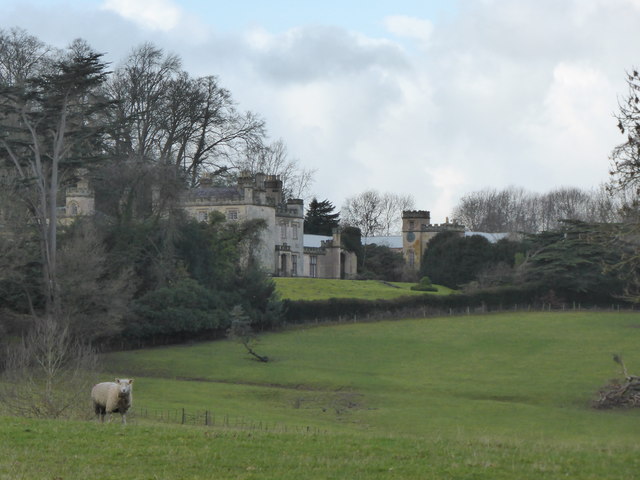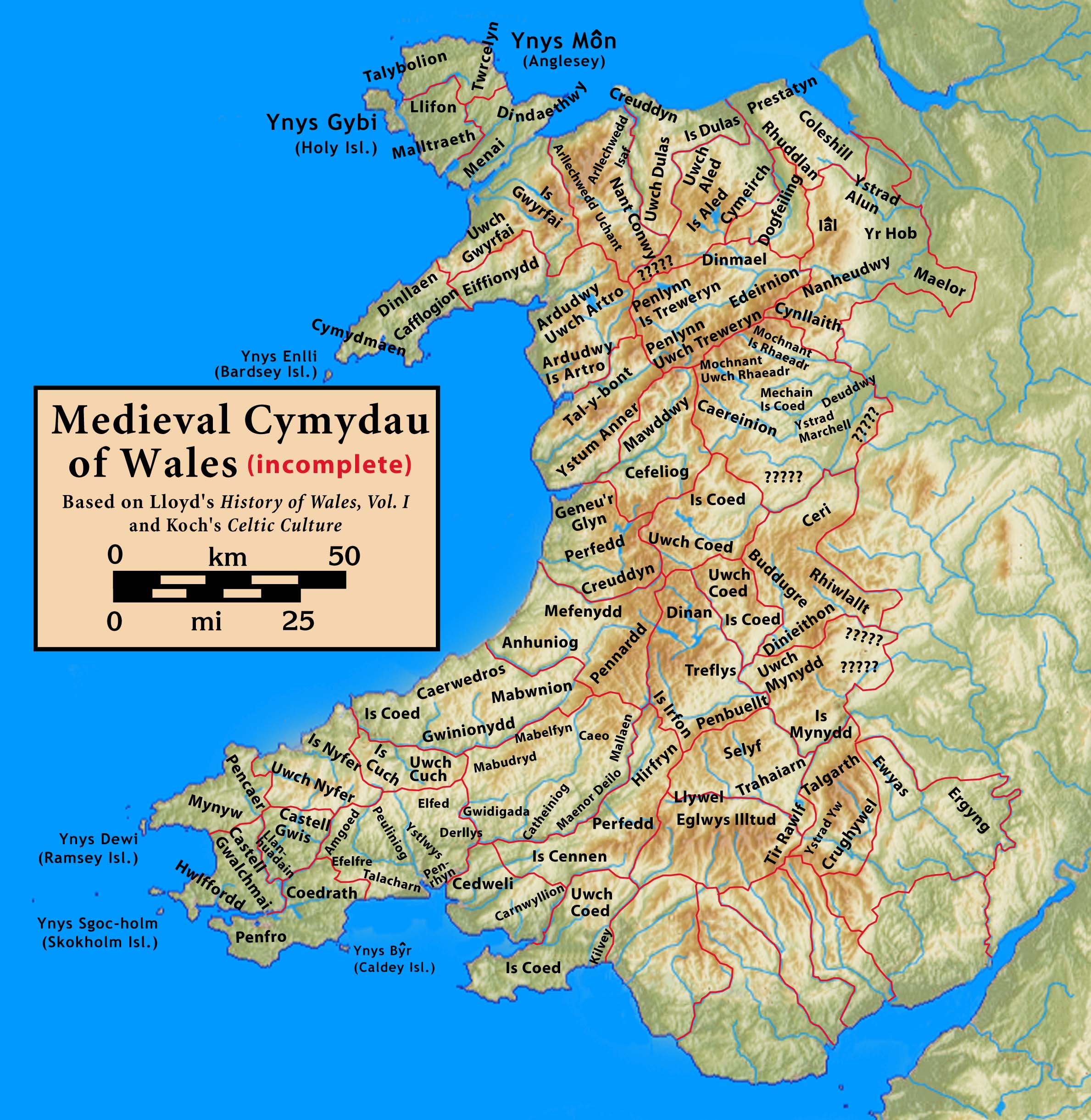Llanerchydol on:
[Wikipedia]
[Google]
[Amazon]
Llanerchydol is a settlement on the A458 about 2 km west of the centre of
 Llanerchydol Hall, a
Llanerchydol Hall, a
 Llanerchydol is named after and is near the northern border of ''Llannerch Hudol'' (also written Llannerchwdwl, Llannerchudol, Llanerchudol or Llanerchydol), which was a medieval
Llanerchydol is named after and is near the northern border of ''Llannerch Hudol'' (also written Llannerchwdwl, Llannerchudol, Llanerchudol or Llanerchydol), which was a medieval
Welshpool
Welshpool ( cy, Y Trallwng) is a market town and community in Powys, Wales, historically in the county of Montgomeryshire. The town is from the Wales–England border and low-lying on the River Severn; its Welsh language name ''Y Trallwng'' m ...
in the county of Powys
Powys (; ) is a Local government in Wales#Principal areas, county and Preserved counties of Wales, preserved county in Wales. It is named after the Kingdom of Powys which was a Welsh succession of states, successor state, petty kingdom and princi ...
in Wales. It is part of the community
A community is a social unit (a group of living things) with commonality such as place, norms, religion, values, customs, or identity. Communities may share a sense of place situated in a given geographical area (e.g. a country, village, tow ...
of Welshpool and also lends its name to an electoral ward
A ward is a local authority area, typically used for electoral purposes. In some countries, wards are usually named after neighbourhoods, thoroughfares, parishes, landmarks, geographical features and in some cases historical figures connected to t ...
.
Llanerchydol Hall
 Llanerchydol Hall, a
Llanerchydol Hall, a Grade II* Listed Building
In the United Kingdom, a listed building or listed structure is one that has been placed on one of the four statutory lists maintained by Historic England in England, Historic Environment Scotland in Scotland, in Wales, and the Northern Irel ...
, is located in parkland between the A458 to Llanfair Caereinion
Llanfair Caereinion is a market town and community in Montgomeryshire, Powys, Wales upon the River Banwy (also known as the River Einion), around 8 miles west of Welshpool. In 2011 the ward had a population of 1,810; the town itself had a popul ...
and A490 to Llanfyllin
Llanfyllin ( – ) is a market town, community and electoral ward in a sparsely populated area in Montgomeryshire, Powys, Wales. Llanfyllin's community population in 2011 was 1,532, of whom 34.1% could speak Welsh. Llanfyllin means ''church or p ...
. The Hall is a fine and largely intact early 19th-century picturesque Gothic Revival style house, with well preserved park and gardens. The site has a long history of occupation, including a Tudor house which burnt down in about 1776, after which David Pugh, a local man who made a fortune selling tea in London, bought the site and built a new house which became known as Llanerchydol Hall.
David Pugh's great grand nephew, also named David Pugh, inherited Llanerchydol Hall and became a local politician. During the 136 years of Pugh ownership, the house underwent many adaptations, including the introduction of the fairy-tale castellations and turrets in the Gothic Revival style (1820).
John Repton was engaged to landscape the surrounding parkland and gardens and much of this may still be appreciated today. The original gardens included a Japanese Water Garden and parterre.
Llanerchydol Hall is one of three grand houses in the area alongside Powis Castle and Vaenor Park and is Grade II* listed, along with the Repton parkland, which is listed in its own right.
The majority of the original 2000 acres of the Pugh Estate were sold off over time, culminating in the sale of the Hall itself in 1912 to a Liverpool cotton trader, Hugh Verdon. Hugh was particularly tall, and had a special bath constructed to hold him! It is still situated in the house. Hugh's daughters inherited Llanerchydol and the house remained in the Verdon family until 1985, when the last remaining daughter, Angela, died aged 97.
The Hall has been sold a few times since, with the 55 acres of Repton parkland no longer in the same ownership as the Hall. The house, in its current form is situated in approximately 5 acres of stunning countryside, within the protected Grade II* listed Repton parkland.
History
 Llanerchydol is named after and is near the northern border of ''Llannerch Hudol'' (also written Llannerchwdwl, Llannerchudol, Llanerchudol or Llanerchydol), which was a medieval
Llanerchydol is named after and is near the northern border of ''Llannerch Hudol'' (also written Llannerchwdwl, Llannerchudol, Llanerchudol or Llanerchydol), which was a medieval commote
A commote (Welsh ''cwmwd'', sometimes spelt in older documents as ''cymwd'', plural ''cymydau'', less frequently ''cymydoedd'')''Geiriadur Prifysgol Cymru'' (University of Wales Dictionary), p. 643 was a secular division of land in Medieval Wales ...
(''cwmwd'') in the cantref
A cantref ( ; ; plural cantrefi or cantrefs; also rendered as ''cantred'') was a medieval Welsh land division, particularly important in the administration of Welsh law.
Description
Land in medieval Wales was divided into ''cantrefi'', which were ...
of Ystlyg
Ystlyg ( en, possibly curve or open country) was a medieval cantref in the Kingdom of Powys. It lay at the east of the kingdom on the border with England. It consisted of the commotes (''cymydau'') of Deuddwr in the north, Ystrad Marchell in the ...
in the Kingdom of Powys
The Kingdom of Powys ( cy, Teyrnas Powys; la, Regnum Poysiae) was a Welsh successor state, petty kingdom and principality that emerged during the Middle Ages following the end of Roman rule in Britain. It very roughly covered the northern ...
. It was in the south-east of the kingdom (north Powys today), close to the border with England. It was a small commote bordering Y Gorddwr Y Gorddwr (or Corddwr) ( en, The Upper Water) was a medieval commote (''cwmwd'') in the cantref of Ystlyg in the Kingdom of Powys. It was on the eastern side of the River Severn bordering England, on the west it was bordered by two of the other com ...
on the east beyond the River Severn
, name_etymology =
, image = SevernFromCastleCB.JPG
, image_size = 288
, image_caption = The river seen from Shrewsbury Castle
, map = RiverSevernMap.jpg
, map_size = 288
, map_c ...
, Ystrad Marchell
Ystrad Marchell sometimes Strad Marchell ( en, Vale of Marchell) was a medieval commote (''cwmwd'') in the cantref of Ystlyg in the Kingdom of Powys. It roughly coincides with the parish of Welshpool.
It lay at the east of the kingdom, bordering ...
in the north, Caereinion
Caereinion (fort of Einion) was a medieval cantref in the Kingdom of Powys, or possibly it was a commote (''cwmwd'') within a cantref called Llŷs Wynaf. It was divided into the manors of Uwch Coed and Is Coed.
It lay towards the south of the ki ...
on the west and Cedewain south of the River Rhiw at Berriew
Berriew ( cy, Aberriw) is a village and community in Montgomeryshire, Powys, Wales. It is on the Montgomeryshire Canal and the Afon Rhiw, near the confluence (Welsh: ''aber'') with the River Severn (Welsh: Afon Hafren)
at , 79 miles (128 km ...
.
From the 11th century it was involved in the conflicts between the Norman Marcher Lord
A Marcher lord () was a noble appointed by the king of England to guard the border (known as the Welsh Marches) between England and Wales.
A Marcher lord was the English equivalent of a margrave (in the Holy Roman Empire) or a marquis (in F ...
s and the princes of Powys. When the kingdom of Powys was divided, after the death in 1160 of Madog ap Maredudd
Madog ap Maredudd ( wlm, Madawg mab Maredud, ; died 1160) was the last prince of the entire Kingdom of Powys, Wales and for a time held the Fitzalan Lordship of Oswestry.
Madog was the son of King Maredudd ap Bleddyn and grandson of King Bleddy ...
, the last prince of the whole of Powys, Llannerch Hudol was given to his illegitimate son Caswallon together with the commote of Broniarth, it subsequently became part of the principality of Powys Wenwynwyn
Powys Wenwynwyn or Powys Cyfeiliog was a Welsh kingdom which existed during the high Middle Ages. The realm was the southern portion of the former princely state of Powys which split following the death of Madog ap Maredudd of Powys in 1160: the n ...
. Its main centre was possibly the Welshpool motte and bailey
A motte-and-bailey castle is a European fortification with a wooden or stone keep situated on a raised area of ground called a motte, accompanied by a walled courtyard, or Bailey (castle), bailey, surrounded by a protective Rampart (fortification ...
castle (Domen Castell) built by Cadwgan ap Bleddyn
Cadwgan ap Bleddyn (1051–1111) was a prince of the Kingdom of Powys ( cy, Teyrnas Powys) in north eastern Wales.
Cadwgan (possibly born 1060) was the second son of Bleddyn ap Cynfyn who was king of both Kingdom of Powys and Gwynedd.
The Anglo ...
in 1111, but there are at least three other motte and baileys within the small commote including Powis Castle
Powis Castle ( cy, Castell Powys) is a British medieval castle, fortress and grand country house near Welshpool, in Powys. The seat of the Herbert family, Earls of Powis, the castle is known for its formal gardens and for its interiors, the form ...
(Castell Coch) and Ladies Mount.
Together with Ystrad Marchell and Deuddwr
Deuddwr (; en, Confluence, literally: two waters) was a medieval commote (''cwmwd'') in the cantref of Ystlyg in the Kingdom of Powys.
It lay at the east of the kingdom, bordering England to the north, the cantref of Mechain to the north-west ...
it formed the ''Teirswydd'' ("three commotes") which were among the lands restored into the possession of Gruffydd ap Gwenwynwyn
Gruffydd ap Gwenwynwyn (died c. 1286) was a Welsh king who was lord of the part of Powys known as Powys Wenwynwyn and sided with Edward I in his conquest of Wales of 1277 to 1283.
Gruffydd was the son of Gwenwynwyn and Margaret Corbet. He was st ...
in return for his homage and fealty
An oath of fealty, from the Latin ''fidelitas'' (faithfulness), is a pledge of allegiance of one person to another.
Definition
In medieval Europe, the swearing of fealty took the form of an oath made by a vassal, or subordinate, to his lord. "Fea ...
by Llywelyn ap Gruffudd
Llywelyn ap Gruffudd (c. 1223 – 11 December 1282), sometimes written as Llywelyn ap Gruffydd, also known as Llywelyn the Last ( cy, Llywelyn Ein Llyw Olaf, lit=Llywelyn, Our Last Leader), was the native Prince of Wales ( la, Princeps Wall ...
at Ystumanner in 1263.
Placename
''Llannerch Hudol'' literally means "Magic Glade" or "Wizard's Glade". However, it is common for Welsh placenames to be based on the name of a saint (''llan Llan may be:
* Llan (placename), a Celtic morpheme, or element, common in British placenames
** A short form for any placename .
* Llan, Powys, a Welsh village near Llanbrynmair
* Llan the Sorcerer
La Lunatica
Lacuna
Lady Bullseye
Lady De ...
'', meaning "church" or "parish", followed by the name or a mutation of it); so it could mean, for example, "Enchanted Parish of St nknown.
Governance
Llanerchydol gives its name to the electoral ward of Welshpool Llanerchyddol, which elects a county councillor toPowys County Council
Powys County Council ( cy, Cyngor Sir Powys) is the local authority for Powys, one of the administrative areas of Wales. The County Hall is in Llandrindod Wells.
History
The county of Powys was created on 1 April 1974 under the Local Govern ...
.
The Llanerchyddol ward also elects up to six town councillors to Welshpool Town Council.
References
{{reflist History of Powys Commotes Populated places in Powys Welshpool